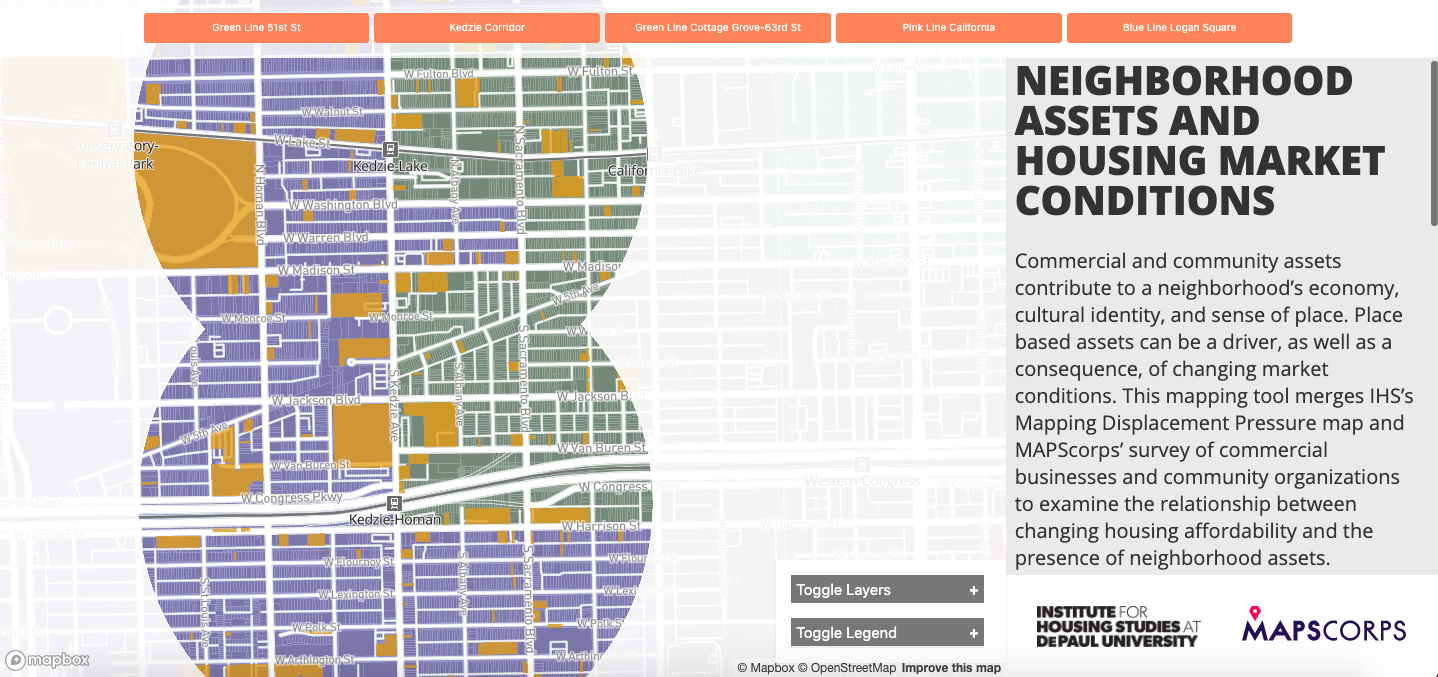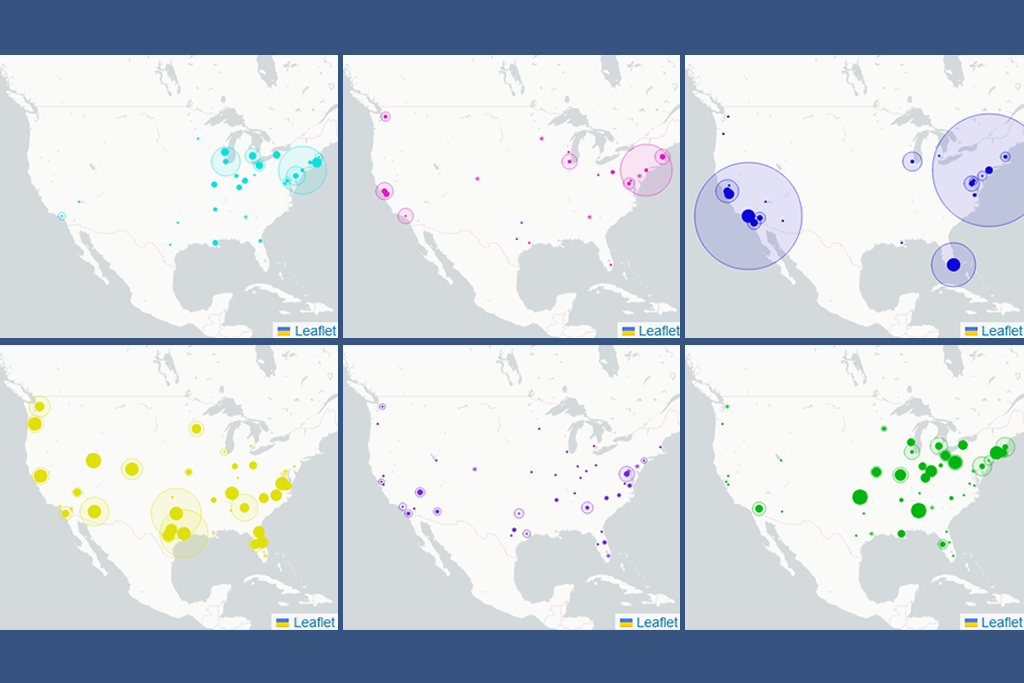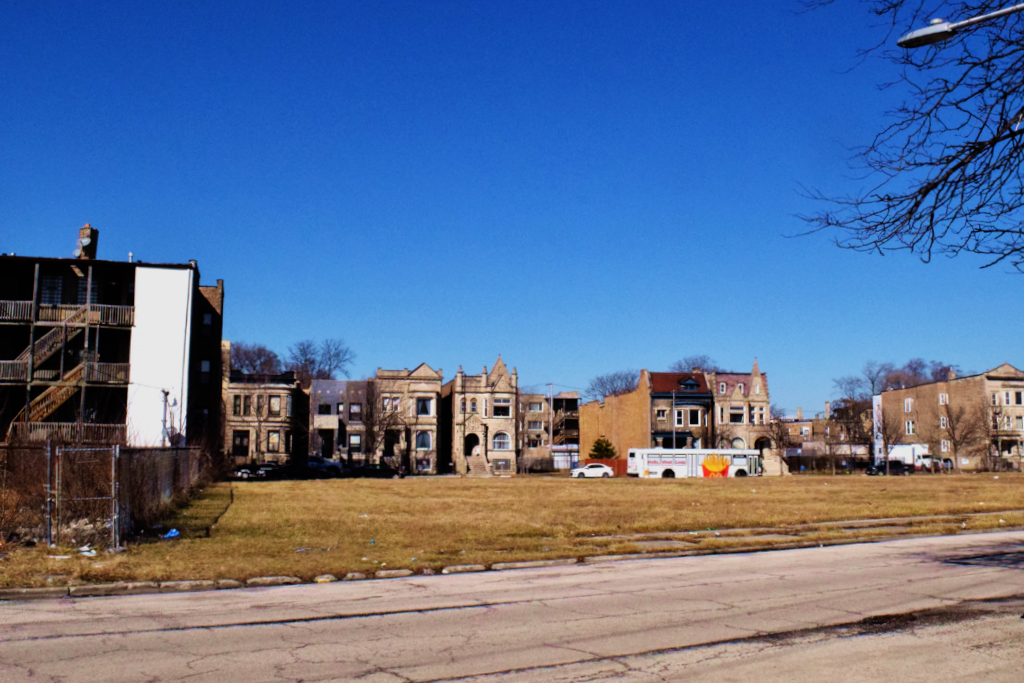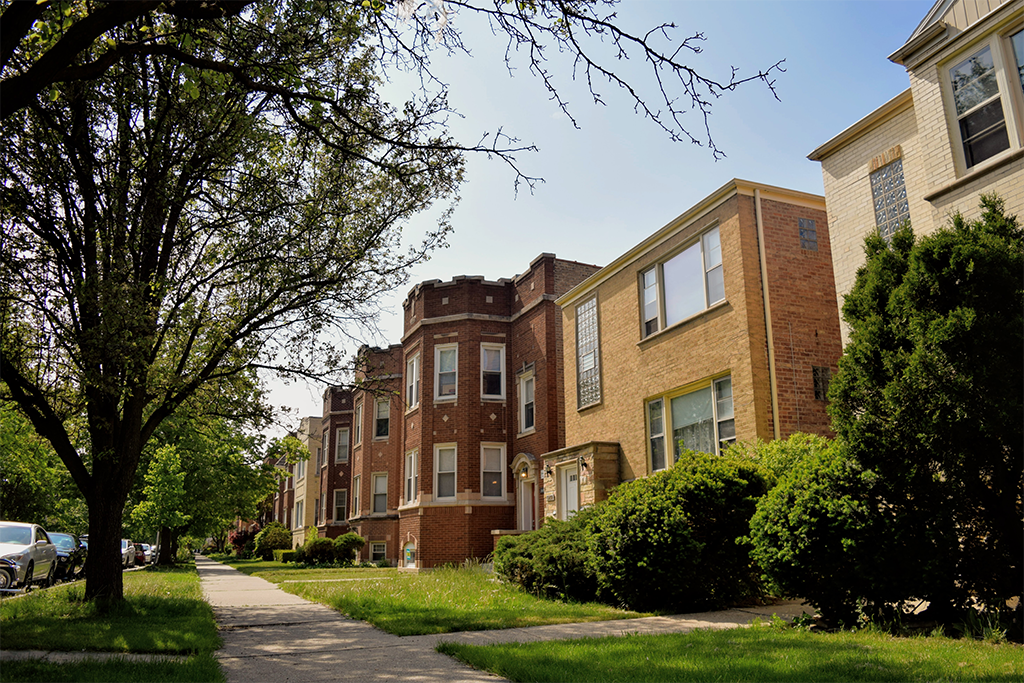The displacement of vulnerable populations and community institutions has been an ongoing issue in cities for decades and has only grown in significance in recent years. In Chicago, displacement pressures can come from multiple directions. In some neighborhoods, increased demand for housing has led to rising rents and the loss of affordable housing which in turn puts increased pressure on long-time residents, particularly those with lower incomes. In other parts of the city, a history of segregation and disinvestment has led to deteriorating housing stock and long-term population loss as middle- and moderate-income households leave neighborhoods.
While much attention is paid to the ways that these types of displacement pressures impact housing, other types of neighborhood institutions can be affected by similar pressures. As the demographic and economic composition of neighborhoods change, businesses and other institutions such as churches or community centers may be forced to adapt. In areas with rising real estate values, changing ownership of commercial real estate and increasing rents may also adversely affect these institutions. As the COVID-19 pandemic impacts neighborhoods across Chicago, the insecurity of neighborhood institutions and businesses is growing as shelter-in-place orders affect the ability of businesses to generate revenue and directly serve their constituents.
Communities struggling to develop strategies to support these institutions lack data on neighborhood businesses and, more critically, existing data can overlook key neighborhood institutions and assets that are essential to the cultural fabric and health of a community, such as places of worship, community centers, and health clinics.
In an effort to bridge these data and information gaps, the Institute for Housing Studies at DePaul University (IHS) and MAPSCorps piloted an innovative collaboration to develop a roadmap to create new data and tools to support community engagement strategies and policy development around the preservation of community assets in Chicago neighborhoods. Funded by the City Tech Connect Chicago Innovation Program, IHS and MAPSCorps engaged community stakeholders to develop basic indicators and a prototype web-based data visualization that overlays market pressures and the mix of a neighborhood's business and organizational assets.
The Collaboration
The project 1) leveraged a unique, ongoing neighborhood data collection effort to access otherwise impossible-to-obtain data on neighborhood cultural and commercial assets; 2) created recommendations and best practices for data collection and management going forward that would allow for stable and consistent updating of data indicators over time; 3) developed basic data indicators and a prototype web-based platform to engage communities on this issue; and 4) identified potential applications for this type of data that might inform ongoing community engagement and policy strategies to mitigate the impact of displacement on cultural and commercial assets.
Beginning with the rich asset data collected by Chicago youth working with MAPSCorps, IHS leveraged its Data Clearinghouse and previous work identifying neighborhoods at risk of rapid price appreciation, lost housing affordability, and potential displacement to develop a series of data indicators to understand the potential pressures on commercial and institutional assets.
The project team then worked with Elevated Chicago community partners to test the data indicators and web-based tool and to learn more about how this type of data could better inform their work. Elevated Chicago is a collaboration of community-based and regional organizations that leverages Equitable Transit-Oriented Development strategies to create a more racially equitable city and region. One of Elevated Chicago’s key priorities is mitigating displacement around their target transit sites (eHUBS) and developing strategies to preserve existing communities and neighborhood assets. Elevated Chicago made an ideal partner for this project because both IHS and MAPSCorps have long relationships with the initiative and many of the groups involved.
The partnership team was funded through City Tech's Connect Chicago Innovation Program. City Tech is an urban solutions accelerator that tackles problems too big for any single sector or organization to solve alone. City Tech's shared its expertise in creating cross-sector teams to launch scalable, collaboratively developed solutions by hosting an initial concept refinement workshop with the IHS and MAPSCorps team.
The Connect Chicago Innovation Program originated as a platform to support collaborative, new ideas to increase tech access, skills, and engagement across Chicago. The donor-advised fund is supported by Microsoft, Comcast, Sprint, the Lenovo Foundation, Gogo, Clarity Partners, and the John D. and Catherine T. MacArthur Foundation. The project proposed by the Institute for Housing Studies and MAPSCorps was chosen by a selection committee comprised of the donors and other local stakeholders such as the City of Chicago.
What We Learned
Data discovery - The first step of the project was for IHS staff to explore MAPSCorps data to understand the structure of the data and how it is collected. The review helped IHS to identify opportunities to use the data to build indicators and make recommendations to improve data collection to support the development of additional applications of the data. Working iteratively with MAPSCorps staff, the IHS team conducted a deep review and made recommendations to 1) improve the consistency and comparability of data year-over-year and 2) adopt practices that improve the coverage of businesses that may change status and addresses that sit vacant for a period of time. Based on lessons from this project, MAPSCorps is exploring protocols to continue to improve data collection and data compatibility for innovative applications. Other organizations who are exploring collaborations that involve joining datasets for analysis and insights should devote extra time to assess potential data limitations.
Data indicator and visualization development - Once IHS staff reviewed the data, they then started to develop ways to analyze and visualize the information. IHS developed prototype data indicators and a visualization that used 1) a snapshot of MAPSCorps data to highlight the current mix of commercial and community assets in each of the Elevated eTOD sites and 2) IHS data to highlight market conditions around each site to help practitioners consider potential housing market pressures for local businesses and institutions. The goal was to use this prototype data tool to spark discussions among key stakeholders around how different types of businesses may experience displacement pressure, what policy remedies may exist or be needed to support community assets and businesses amid these pressures, and what other data and research are needed to achieve these policy and programmatic priorities.
Community input – Using the prototype data indicators and visualization as a starting point for the conversation, IHS and MAPSCorps engaged Elevated Chicago partners and other issue-area stakeholders to better understand how the stability of commercial and community assets are impacted by market pressures that lead to residential displacement and how these issues manifest differently across neighborhoods. This was done through direct engagement with on-the-ground partners and through a convening of stakeholders hosted by IHS and MAPSCorps.
Elevated Chicago team members noted how market pressures have affected specific assets in their eHUB communities. They highlighted the relocation of Daley’s Restaurant near the 63rd/Cottage Grove station as an example of preserving a long-time neighborhood business. They also highlighted efforts to repurpose the closed Overton Elementary School in Bronzeville near the Elevated Chicago’s 47st St eHUB. They also sadly noted the many businesses that have been lost, particularly near the Logan Square eHUB.
Many critical points surfaced from these stakeholder conversations, and a common theme was that real estate market pressures can impact the local community and commercial assets in different ways within a community and that this variation can make policy interventions challenging. Much like residents, institutions and businesses can be impacted by rising costs and changing neighborhood demographics and preferences but each asset type – whether it’s retail, educational, public health, arts and culture, etc. – can represent profoundly different policy spaces and different challenges.
For example, feedback from stakeholders in East Garfield Park indicated that the diversity of retail establishments and commercial landlords made it difficult to develop strategies for part of the community, but knowing the locations of industrial and warehouse spaces in the neighborhood could help inform workforce development strategies. Conversely, stakeholders in Little Village were interested in learning more about local businesses and commercial building owners to better coordinate outreach efforts and bring local business owners into neighborhood networks. Some noted that data on the mix of assets in the community could inform strategies to attract new businesses that are aligned with community needs.

Photo Caption: The Connect Chicago Innovation Program winners met with City Tech and community experts on July 18, 2019 to workshop the initial project concept.
Given this complex issue and policy environment, stakeholders discussed what might be needed to best support community asset retention-related activities more broadly. These opportunities may include:
- Developing an inventory of commercial and community assets present in a neighborhood
- Creating an indicator to understand the composition of commercial and community asset types
- Creating a resource to facilitate outreach to and engagement with local commercial and community institutions
- Connecting information on the mix of neighborhood assets to ongoing efforts such as comprehensive community development work, neighborhood quality-of-life planning, participatory budgeting at the ward level, and the development of eTOD strategies
- Continuing engagement with community partners to get feedback on data and leverage local knowledge
What’s Next
Due to COVID-19, local businesses and organizations face unprecedented financial stress and potential closure. Now more than ever, a hyper-local focus on businesses that may be more vulnerable in the current crisis and the ways in which that vulnerability builds on existing neighborhood pressures is essential to understand potential community economic and health impact and to inform recovery efforts. In 2020, IHS will continue to work with Elevated Chicago partners to understand potential applications of these data indicators and the IHS/MAPSCorps prototype tool. Based on stakeholder input, IHS and MAPSCorps will explore opportunities to refine a data pipeline and update data indicators and the visualization tool to better understand the impact of COVID-19 on community assets and to support post-COVID-19 neighborhood revitalization.






